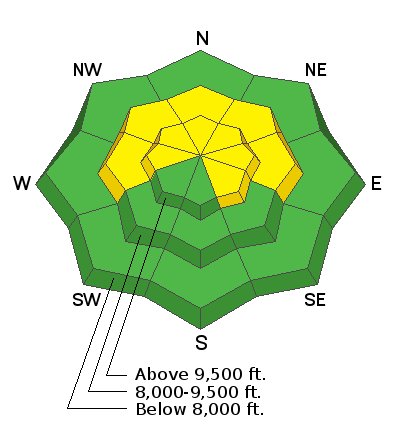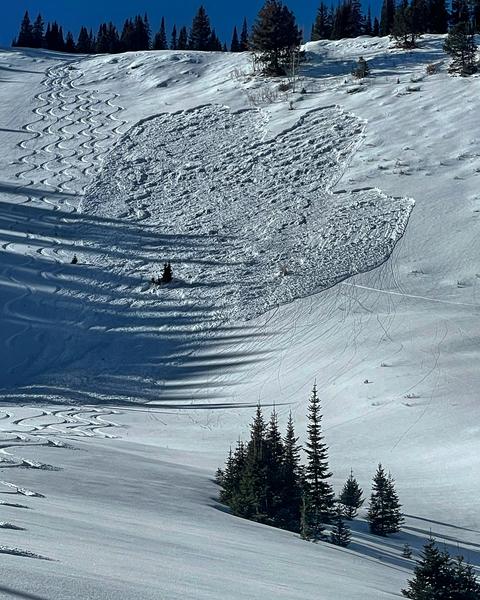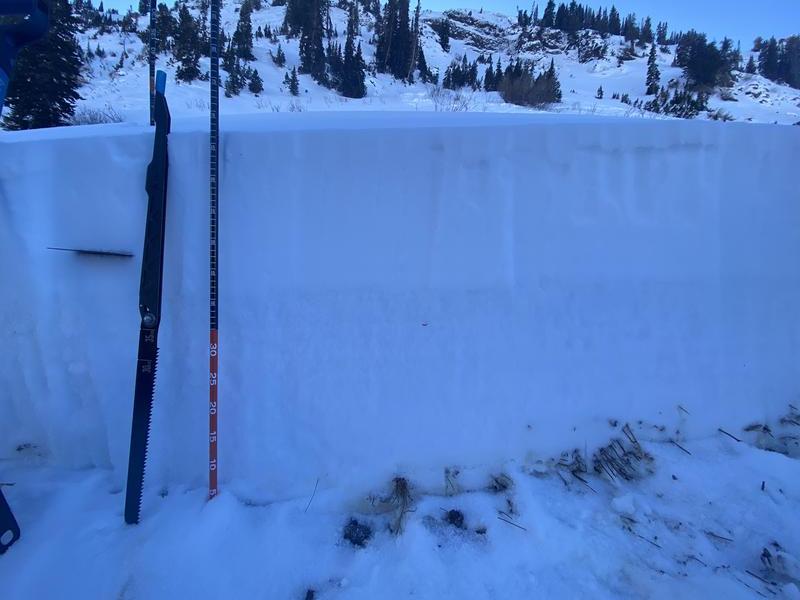The dominant avalanche problem this season continues to be the persistent weak layer of weak faceted snow in the bottom half of our snowpack. Every forecaster that went out yesterday noted the same weak snowpack structure in their travels, you can see a photo below from Trent's pit in
Mineral Fork that illustrates the widespread pattern of stronger snow (a cohesive slab) on top of the weaker faceted snow.
While the likelihood of triggering an avalanche is decreasing, avalanches are still occurring which is a reminder that the poor snowpack structure still exists and is still very weak. Outside of the two avalanches reported yesterday, we are still getting reports of widespread cracking, collapses, and propagation in extended column tests. Today, triggering an avalanche that fails on the persistent weak layer remains possible on slopes facing northwest through east at the mid and upper elevations. The most likely place to trigger an avalanche will be slopes that have been loaded from a few of the stronger wind events this past week and have a stronger slab on top of the weak facets.
Trent's photo from Mineral Fork illustrates the strong cohesive snow (the bright white snow) atop the weak faceted grains (the more grey snow). This is the snowpack structure that we are seeing across the range on primarily north and easterly facing terrain.
What are your options for dealing with this persistent weak layer? Today, you've got two options:
- Ride slopes less steep than 30 degrees;
- Ride slopes facing south where this persistent weak layer generally doesn't exist and avoid pockets of wind drifted snow. These slopes don't have much snow but have become much more supportable.
Be patient, folks, we're going to be dealing with this issue for some time. In the video below Greg shares some thoughts on dealing with our current poor snowpack structure and how it relates to danger ratings. Remember, with a moderate avalanche danger human triggered avalanches are still possible:
With a bump in winds this afternoon, if there are any signs of drifting snow, such as obvious transport, cracking, and pillow-shaped snow, avoid those slopes. Triggering an avalanche that initially fails in the wind-drifted snow will likely break down more deeply into the weak faceted snow below.











